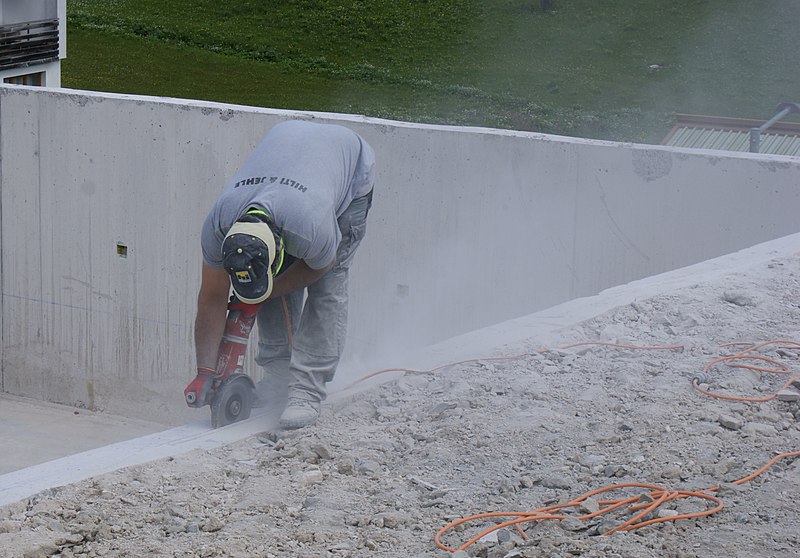In this article, we’ll take a look at slab cutting, its advantages, application, and disadvantages.
What is it?
Oftentimes, when talking about slab cutting, we are referring to concrete slab cutting. We know concrete, walk on concrete, see concrete and we’ve definitely watched a movie or two wherein characters punch concrete walls or drive cars into them. That gives the notion that cutting concrete slabs into regular and precise shapes would almost be impossible.
Well, it isn’t.
Armed with a diamond blade, steady hands, and following safety precautions, you can cut concrete slabs to your desired shapes.
Slab Cutting is usually done with diamond blades. These are saws/blades with steel cores and diamond segments on the edges to harden the blade and boost its efficiency. These diamonds are made from the mixing of synthetic diamond crystals and metal powder.
Application
There are a number of applications for slab cutting. They include but are not restricted to the following:
- Road repairs: Asphalt can be cut to allow for the erection of other structures and other road repairs. Meanwhile, if your next project is in Sydney city, see here for the best concrete cutting Sydney.
- Cutting of sidewalks: Slab cutting is a rather easy solution to expanding your road, driveway, or other spaces next to your sidewalk. You just ‘trim’ it.
- Cutting of window spaces and doorways: It is never too late now to reconsider the position of your doorways and windows if you can just cut them out with an appropriate blade.
- Cutting of concrete pipes and electric trenches
- Demolition control etc.
Advantages
The advantages of slab cutting are quite a lot. The possibility of being able to remodel or manipulate the shapes and thickness of the almost rock-hard and seemingly permanent structures is a great advantage in itself. Other advantages include:
- Quick: This is an embodiment of the slab cutting process. It is meant to be fast; a quick solution to structural problems.
- Efficient: A properly done slab cut would preserve the integrity of the target structure.
- Economical: It involves less manpower and the equipment is sturdy and durable, saving costs for the next time.
- Less Dust: This gives the slab cutting process a health advantage over other cutting solutions.
Disadvantages
There are always cons to every known process and though they might be fewer with slab cutting, there are disadvantages still. They are enumerated below:
- No Universal Blade: There are specific saws used to cut concrete, depending on the technicality of the task and other factors. Mistakes are bound to be made but it is always best to use the right cutting tool for the right task. Failure to adhere to this might result in injuries as well as a messy job.
- Seepage and leaks: Due to the large need for precision in the process, leakages and seepage can be created in a slab when working. To rectify such errors would involve the use of cement.
- Seldom Perfection in Cuts: A keynote in slab cutting is marking out your cut path. This is important, especially when using hand-held blades. Water can also be trickled onto working surfaces while cutting.
That is it on slab cutting. If you wish to try it, get yourself the right equipment and follow proper safety precautions.

